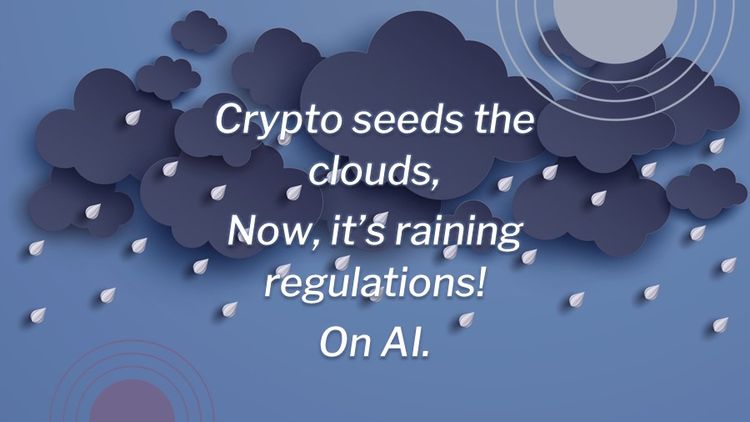The Fed has spoken – RIP for the Magic Money Tree

The Fed responded to the chaos of inflation, European war, and continuing Covid in Asia. The Federal Reserve Bank raised short-term US interest rates by half of a percent on Wednesday, May 4. Technically, it raised the benchmark federal funds rate to a range of 0.75 and 0.1 percent. This increase will feed through to all short-term borrowing and lending by US individuals and institutions. In addition, the Fed will sell sixty billion dollars of Treasuries and thirty-five billion dollars of mortgage-backed securities a month in what is called quantitative tightening.
At its heart, the Fed action is an attempt to unwind the inflationary effects of unconstrained fiscal and monetary stimulus over the last couple of years. Essentially, we had too much government spending financed by government borrowing. Both the Congress and the Fed followed the advice of major economists and increased federal spending far above government revenues, issuing Treasury bonds to finance the expenditures. The net effect of this was a still unsatisfied electorate and the highest inflation rate in forty years.
Modern Monetary Theory
Ideas from Modern Monetary Theory (MMT) supported the borrowing. MMT is also called the Magic Money Tree. And the Fed is in the process of adopting policies to stop the effects of MMT. The Fed is chopping down the Magic Money Tree.
MMT’s economic legacy will have a slow death, though. The Fed has laid out a set of policies to correct the surge in inflation, but they are weak ones indeed. The year end rate implied in the statement is only 2.5% and at this rate of bond sales from the Fed balance sheet, the number of bonds will fall to pre-pandemic levels in 7.8 years. And even this anemic effort to limit inflation will be difficult with an election on the horizon because, by November, the Fed will need to appear to be neutral economically and politically. If the economy is weak, it could be lowering interest rates, even if inflation remains elevated.
And the world will not help the Fed. Supply chain snarls continue unabated as China tries to control Covid with draconian lockdowns. This will help bias inflation up, even as the Fed tries to tamp it down. MMT beliefs will die hard too, boosting Federal spending even as the Fed tries to manage the economic pain in our time.
It will not be fun, and Powell’s own comments recognize the Fed’s unpleasant role.
"So we understand the pain involved. So, how do you -- how do you get out of that?" Powell asked. "It's our job to make sure that -- that inflation of that unpleasant, high nature doesn't get entrenched in the economy. That's what we're here for, one of the main things we're here for, the most fundamental thing we're here for.
"And the way we do that is we try to get supply and demand back in -- in sync with each other, out of -- back in balance so that the economy is under less stress and -- and inflation will go down. Now, the process of getting there involves higher rates, so higher mortgage rates, higher borrowing rates and things like that.
"So, it -- it -- it's not going to be pleasant either. But in the end, everyone is better off. Everyone, particularly people on fixed incomes and at the lower part of the income distribution, are better off in -with stable prices. And so, we -- we need to do everything we can to restore stable prices. We'll do it as quickly and effectively as we can.” [1]
Can the Fed get to a soft landing? The Fed wants to control inflation without causing major economic shocks. No doubt, members of the Fed believe in their plan.
The Fed is no oracle
The Fed is an insider. It has more proprietary information than anyone outside of government. That information is valuable as the recent insider trading allegations against Fed officials show. Senior Fed officials traded on inside information to which they had access.
But even with all that information, the Fed is not much better at an analysis of the economy than other non-governmental economists. This will seem strange to readers. If you know more about the economy, you should be better prepared to manage it in the future.
That is not necessarily true at the macroeconomic level. First, most of the information which is important to the economy is publicly available on a regular basis. The Fed may know something like the unemployment rate a day or two before its public release, but that is of modest help in long-term planning. Secondly, and most importantly, the models of the economy have not been especially good. No particular set of input data about where the economy is today tells one very much about where it is going.
And economic models are publicly and universally available. The Fed is, to its credit, quite open about its thinking. Knowing how the Fed thinks about problems is of limited value if the models are wrong. Some incredibly significant models have fallen out of favor recently. Two come to mind: the efficient markets hypotheses and the Phillips Curve. Even if the Fed knows more about the economy and gets the information earlier, it does not make them better in their predictive ability of the economy. It is the ability of the Fed to predict that is at the core of its management of the economy.
The Fed has just started
The Fed’s recent announcement really does not tell us much about what the Fed or the economy will do in the future. The Fed recognizes the need to do something about inflation and the Fed was in denial until only a few weeks ago. Still, we should not think that the Fed is very much in charge of the economy. It expects the next year to be painful as it searches for a solution.
As for the MMT model, it never made practical sense and its consequences will be long felt and painful. We need to chop the money tree down before it does even more damage.
Investor Implications
1 – Expect higher interest rates in the future.
2 – Expect Fed uncertainty.
[1] Jones, Susan, Fed Chair on Inflation: 'We Understand the Pain Involved', May 5, 2022, CNS News.
We hope you enjoyed this article. Please give us your feedback.
This article is not intended as investment, tax, or financial advice. Contact a licensed professional for advice concerning any specific situation.






